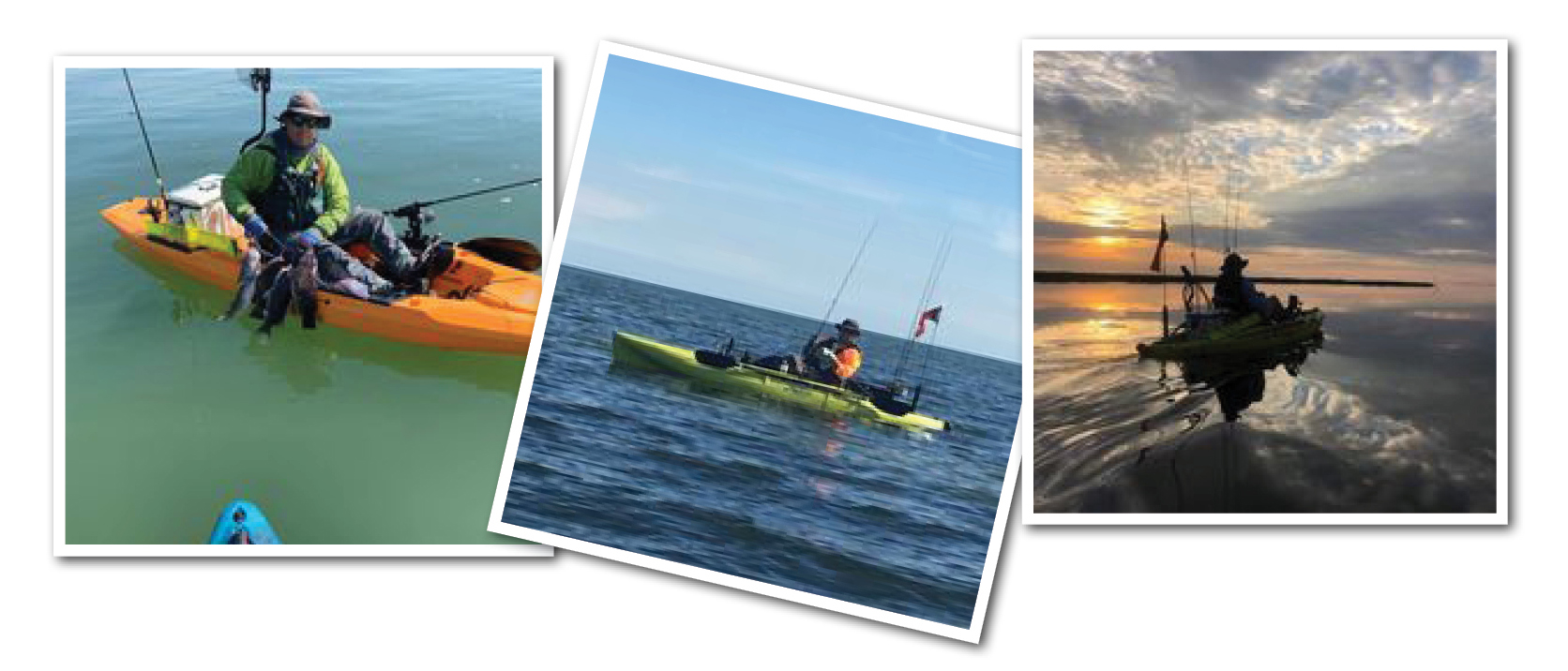He was surrounded. Sitting in his kayak on the Eastern Shore just off Fisherman’s Island, Ron Cagle had never seen so many red drum. The spectacle of hundreds of them jumping in the air mimicked a fish feeding frenzy.
Out of nowhere, a powerboat approached.
Poof!
The drum scattered and disappeared.
That snapshot, in a nutshell, encapsulates what’s so wonderful about kayak fishing.
Sitting in an unobtrusive kayak, the angler isn’t interrupting nature or spooking the fish.
“You’re part of nature,” said Gloucester resident Cagle, president of the Tidewater Kayak Anglers Association. “I have eagles come down near me when I’m catching fish. I see otters come up next to the boat and dolphins swimming beside me. It’s like I’m not even there to them.”
Now Cagle has nothing against boats, but “there’s no such thing as a free boat.”
Growing up on the waters of the Middle Peninsula, Cagle fished regularly with his dad and spent 22 years loving the water during his career with the Navy. When he retired from the military and wanted to get back into fishing, forking over a lot of money for a boat was a daunting prospect.
“I was looking for an alternative way to fish, and a kayak fit that bill,” he says.
Cagle owns two kayaks and a skiff. Once the initial purchase of the kayak is made, kayak upkeep is minimal. Whether you want to paddle or peddle, he promises you’ll discover all sorts of fishing haunts you never knew existed.
“You can get places you can’t get to with a motorboat,” he says. “We are surrounded by some of the best waters anywhere in Virginia right here in Gloucester, Mathews and Middlesex. The North River, the East River, the York River, all those rivers hold great fishing. Sarah’s Creek, Catlin Islands. I get in places with a kayak I always wanted to see growing up. There’s just so much life in some of these places.”
Now admittedly, he says, kayak fishing can cost a bundle if you want to outfit your boat with all the latest and greatest frills.
“Kayaks are very customizable,” Cagle says. “You can go with the bare basics, which is nothing more than a piece of plastic. Or you can have one with fish finders on it. Some even have motors; mine are pedal drives. You can go all sorts of different routes. It depends on what you want.”
Cagle never overlooks the most important piece of gear for kayak fishing — the life jacket. His day job is as a first sergeant with the Virginia Marine Police. He is one of the founding members of its dive team, and his job is to recover lost anglers.
“Out of all the bodies I’ve recovered, none of them were wearing a life jacket,” he says. “I can’t overemphasize the importance of wearing a life jacket enough.”
He stresses safety in his role Tidewater Kayak Anglers Association, which offers a wealth of fishing activities to promote camaraderie among kayak anglers of all ages. The group promotes conservation efforts and hosts multiple tournaments.
As much as Cagle enjoys red drum for supper, he often catches and releases. But that doesn’t take any of the joy away of reeling in a fish on a kayak.
“You’re almost act like a bobber or a float,” he says. “You get a better feel for the fish in a kayak. You respect them a lot more because you’ve got that connection between you and the fish. You understand what it really takes and how much they’re really pulling. When you bring them in, you’re in a good position to release them alive. You don’t have to take them out of the water because the boat’s not that high up.”
While Cagle initially leaned toward kayaks over boats due to the economics, he’s evolved into actually preferring to fish that way.
Boats do get you from here to there faster and better equip you to handle bad weather. You can fish more varieties in a single outing.
“But in my kayak, fishing is a lot more pleasurable,” Cagle says. “I get away from the crowds. I’m by myself. Even if you go out with someone, they’re out there on their kayak and I’m over here on mine. We’ve got each other for safety reasons, but we’re each doing our own thing.”

